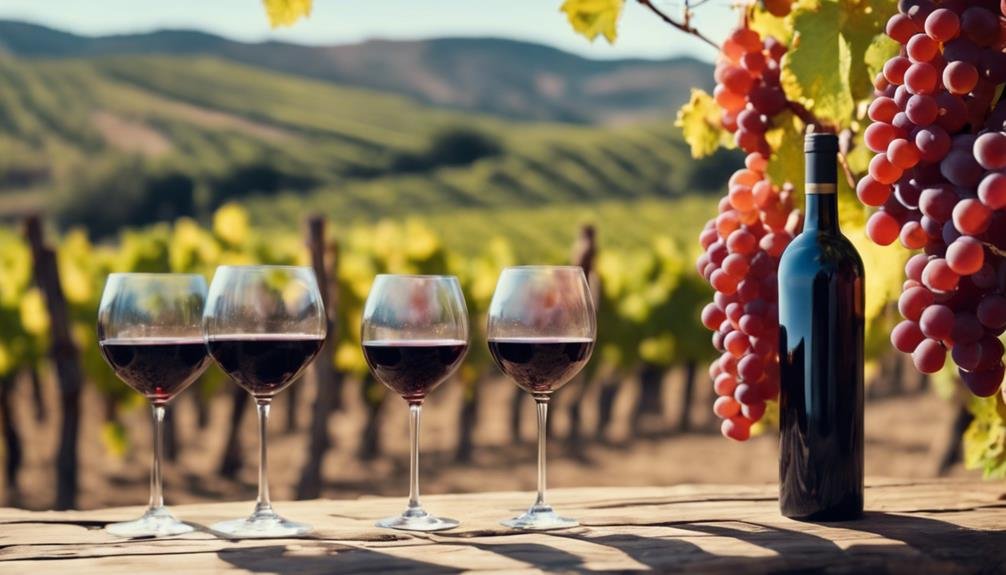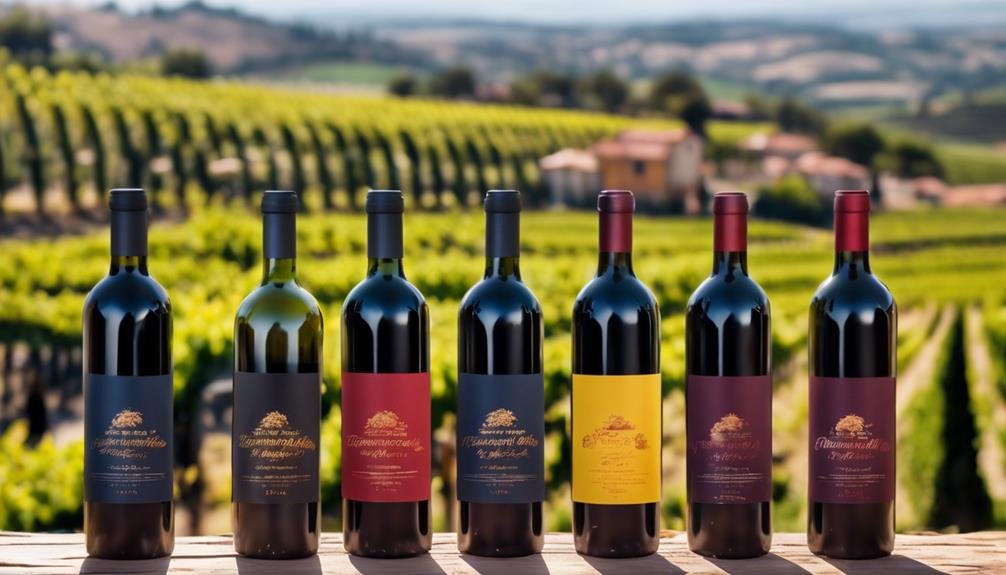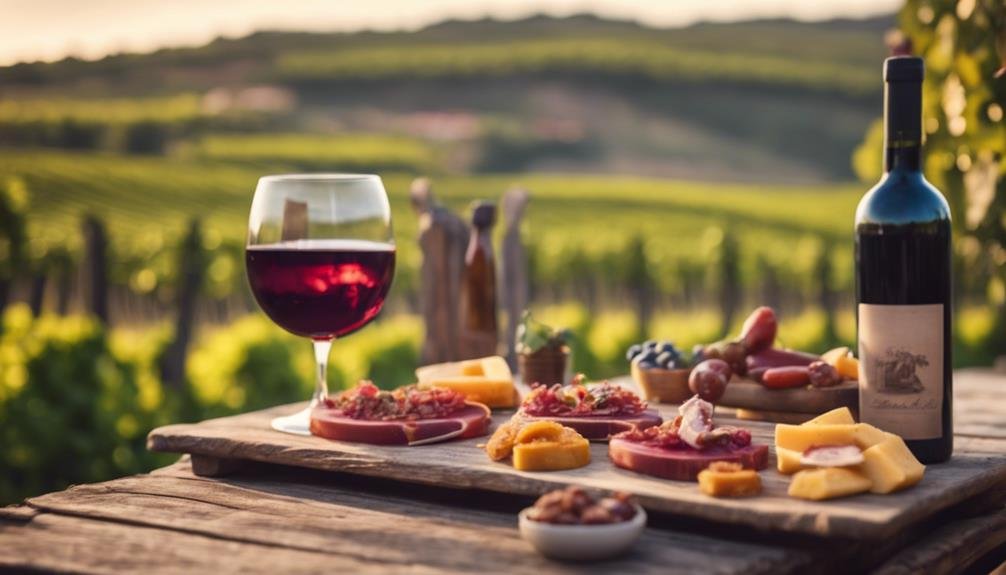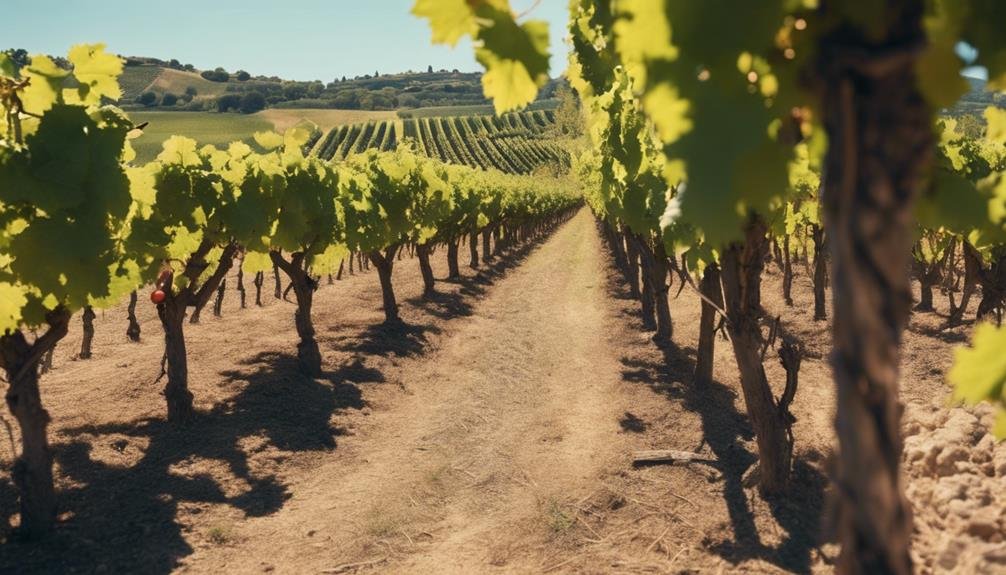Discover Spain's diverse wine wonderland where 77 native grapes thrive in 65 unique regions. Notable areas like Rioja and Cava have distinct traditions. Spain's varied terroir allows for a broad wine spectrum. Spanish winemakers prioritize quality and innovation globally. White wines like Verdejo offer lemony profiles, while reds like Bobal bring fruity notes. Regions like Valdeorras and Bierzo stand out for Godello wines. Notable selections include Reserva Cava with peach hints and Albariño's apple flavors. Explore Spain's vibrant wine culture, hinting at the rich tapestry awaiting exploration.
Spanish Wine Production Insights
Insight into Spanish Wine Production
Spain's wine production industry showcases a rich tapestry of high-quality wines, boasting 77 indigenous grape varieties and over 65 unique wine regions. From the robust Tempranillo in Ribera del Duero to the delicate Albariño in Rías Baixas, Spanish wines offer a broad spectrum of flavors and styles.
Notable regions like Rioja and Cava stand out for their distinctive winemaking traditions and exceptional grape cultivation practices. The diverse terroir of Spain allows for the production of a wide range of wines, each reflecting the unique characteristics of the region.
With a focus on quality and innovation, Spanish winemakers continue to push boundaries, making Spain a prominent player in the global wine market.
White Spanish Wines Overview
Spain's diverse wine landscape encompasses a variety of white wines that showcase unique flavors and characteristics from different regions.
Verdejo from Rueda offers a dry, crisp lemony taste profile, ideal for pairing with seafood dishes.
Albariño from Rías Baixas provides complexity and elegance with citrus and peach flavors, making it a great match for light salads or grilled vegetables.
Godello from regions like Valdeorras offers different styles, from oaky to fresh and citrusy, with aging potential that enhances its richness and texture.
Txakoli from País Vasco is a dry wine with green apple and lime peel notes, perfect for enjoying with fresh cheeses or tapas.
When exploring white Spanish wines, consider their food pairing versatility and aging potential to fully appreciate their diverse characteristics.
Red Spanish Wines Showcase

In the world of Spanish wines, the focus now shifts to exploring the rich tapestry of flavors and characteristics offered by red varieties across the diverse wine regions of Spain. Spanish wine varietals such as Bobal, Garnacha, Mencía, Priorat/Montsant blends, and Monastrell showcase the country's red wine diversity. Each varietal brings unique fruity and spicy notes, reflecting the Spanish wine terroir. Bobal from Castilla-La Mancha boasts juicy blueberry and blackberry flavors with soft tannins, while Garnacha offers fruity wild strawberry and raspberry notes. Mencía from regions like Bierzo and Valdeorras presents aromas of sour cherry and pomegranate with moderate tannins. Priorat/Montsant blends deliver full-bodied wines with a harmonious mix of spice and fruit flavors. Monastrell from regions like Murcia completes the selection with blackberry and plum notes and medium tannins.
| Spanish Wine Varietals | Flavor Profile | Regional Origin |
|---|---|---|
| Bobal | Blueberry, Blackberry, Soft Tannins | Castilla-La Mancha |
| Garnacha | Wild Strawberry, Raspberry | Various regions |
| Mencía | Sour Cherry, Pomegranate, Moderate Tannins | Bierzo, Valdeorras |
Spanish Wine Regions Exploration
Exploring the diverse wine regions of Spain reveals a fascinating tapestry of terroirs and grape varieties that contribute to the country's rich winemaking heritage. From Rueda's dry and lemony Verdejo wines to Rías Baixas' complex Albariño offerings, each region showcases unique characteristics shaped by its terroir.
Valdeorras, Bierzo, and Monterrei stand out for their Godello wines, known for their fresh and citrusy flavors. País Vasco is home to Txakoli, a dry wine with distinctive green apple and lime peel notes. Rioja, Aragon, and Navarra produce Rosado wines, particularly those made with Garnacha grapes, offering fruity and floral profiles.
Exploring these regions provides a deeper understanding of Spain's diverse grape varietals and winemaking traditions.
Notable Spanish Wines Highlight

Among the notable Spanish wines, there are distinct characteristics that set them apart when it comes to flavor profiles and quality. The Reserva Cava offers lime, white flowers, and peach flavors with a tingly finish, while Verdejo showcases Meyer lemon, white peach, and citrus blossom notes. Albariño provides crisp apple, lime zest, and peach flavors with a dry finish. To emphasize these differences further, the table below highlights the key flavor profiles of these exceptional Spanish wines:
| Spanish Wine | Flavor Profile | Finish |
|---|---|---|
| Reserva Cava | Lime, white flowers, peach | Tingly |
| Verdejo | Meyer lemon, white peach, citrus blossom | Citrusy |
| Albariño | Crisp apple, lime zest, peach | Dry |
These wines represent the diversity and excellence found in Spanish winemaking.
Distinct Spanish Wine Regions Unveiled
The diversity of Spanish wine regions showcases a rich tapestry of terroirs and grape varieties, each contributing to the country's vibrant winemaking landscape.
Rioja stands out for its oak-aged wines, featuring aromas of dill, coconut, and vanilla, with the Reserva classification being particularly notable.
On the other hand, Ribera del Duero is known for its boldness, offering tasting notes of black cherry, mocha, and truffle, primarily crafted from the Tempranillo grape.
This region, nestled in the Duero River valley, is home to esteemed wineries like Vega Sicilia, producing quality wines priced around $20.
The unique characteristics of Rioja's oak and Ribera's boldness make them essential stops on any wine enthusiast's journey through Spain's diverse wine regions.
Spanish Wine Pairing Recommendations

Building upon the diverse tapestry of Spanish wine regions and their unique characteristics, understanding ideal wine pairings can elevate the sensory experience of enjoying these remarkable wines.
When it comes to food pairings, Spanish wines offer a wide range of options to enhance your dining experience. For white wines like Verdejo and Albariño, consider pairing them with seafood dishes to complement their citrus and peach flavors.
Red wines such as Bobal and Garnacha pair beautifully with roasted meats, bringing out their fruity notes and soft tannins. For a unique experience, try matching Godello or Priorat blends with spicy dishes to balance the flavors.
Exploring these flavor profiles through thoughtful food pairings can truly enhance the enjoyment of Spanish wines.
Frequently Asked Questions
What Are the Traditional Winemaking Techniques Used in Spain?
Traditional winemaking techniques in Spain encompass hand grape pressing, natural fermentation methods, and unique aging processes. Vineyard practices emphasize sustainability and respect for terroir. These methods preserve the essence of Spanish wines, showcasing the rich heritage and diverse flavors.
How Does the Climate in Spain Influence Wine Production?
Climate variations in Spain greatly impact wine production. Regions like Rioja benefit from continental climate, while coastal areas like Rías Baixas have maritime influence. This diversity allows for a range of grape varieties to thrive, resulting in unique and high-quality wines.
Are There Any Unique Spanish Grape Varieties Worth Exploring?
With over 77 indigenous grape varieties, Spain offers a treasure trove of rare varietals and hidden gems waiting to be explored. Unexplored terroirs hold untapped potential, promising unique wine experiences for enthusiasts seeking distinctive flavors.
What Are the Key Factors That Determine the Quality of Spanish Wines?
The quality of Spanish wines is determined by the diverse grape varieties used, meticulous vineyard management practices, soil composition, and the aging process. These factors collectively contribute to the unique flavors and characteristics found in Spanish wines.
How Is the Concept of Terroir Reflected in Spanish Wines?
In Spanish wines, terroir manifests through a mesmerizing interplay of soil composition and grape characteristics, accentuated by vineyard location. This intricate dance yields unique flavor profiles, painting a vivid tapestry of Spain's diverse wine landscape.
Conclusion
To sum up, the diverse and enchanting world of Spanish wine offers a rich tapestry of flavors, traditions, and exceptional blends that showcase the country's position as a powerhouse in the winemaking industry.
From the sun-kissed vineyards of Rioja to the rugged terroir of Toro, Spain's unique microclimates give rise to a myriad of wine styles that captivate the senses.
With a legacy dating back centuries, Spanish winemakers continue to craft exceptional wines that delight wine enthusiasts worldwide.
